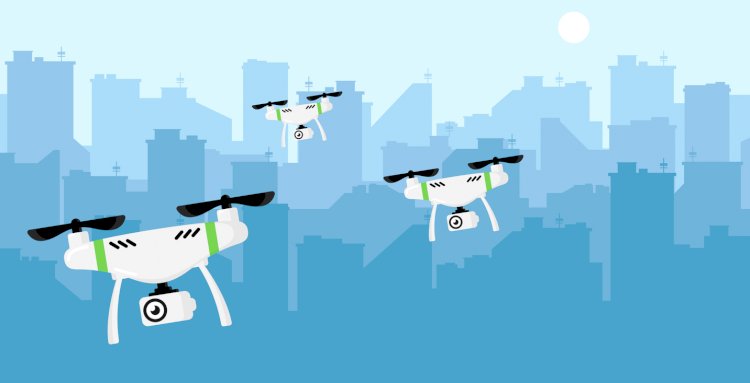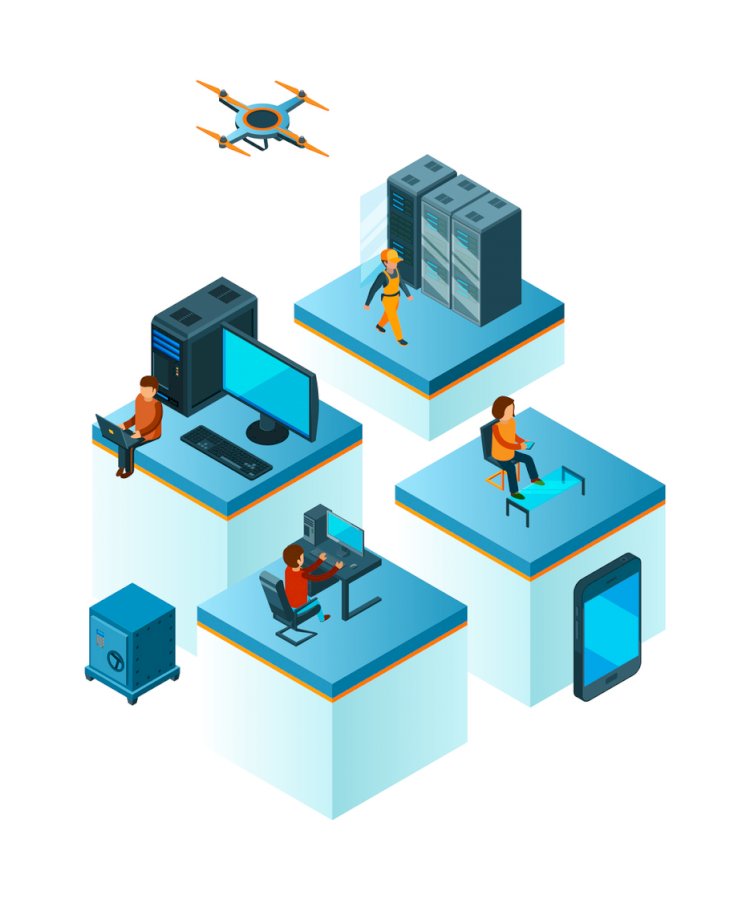9 Advantages of Using Drones for Inspections
Drones are making headlines for their aid in delivering packages to consumers and taking photo and video of places damaged by weather events. But far from the splashy headlines of drones in action are drones being used in everyday industry - agriculture, equipment repair, and more - to help people do their jobs faster, more effectively, and more efficiently.

Drones are making headlines for their aid in delivering packages to consumers and taking photo and video of places damaged by weather events.
But far from the splashy headlines of drones in action are drones being used in everyday industry - agriculture, equipment repair, and more - to help people do their jobs faster, more effectively, and more efficiently.
Here are 9 advantages of using drones for inspections in commercial enterprises:
Minimize Danger & Health Risks

Inspecting certain areas and items can be incredibly dangerous for humans.
If a flood or tornado rips through a city, causing damage and dangerous conditions, sending people in to inspect the damage and make a plan for next steps is highly risky. Inspecting buildings, such as those slated for demolition, can also be dangerous for humans, but safe for drones.
Drones can be very carefully controlled, made to move into tight or dangerous places - including inside mine shafts, in wells, or under the foundations of buildings - allowing inspectors to see minute details that could be important to their work and their goals. Using drones instead of people for these inspections eliminates not only the risk to the person who would be sent to inspect the area in place of the drone, but can also help them better evaluate dangerous conditions that could hurt workers sent in later in the process.
Collect More In-Depth & Higher Detail Data
Humans aren’t able to see every single detail of a piece of equipment or a location they’re inspecting. Things naturally fall through the cracks and go unnoticed, and sometimes the missed details are important ones.
Drones, on the other hand, are always watching with their cameras and sensors. They don’t miss anything, even data points that are insignificant.
However, all that data is captured and recorded, allowing for a more in-depth, clearer picture of the conditions being inspected.
This level of information collected can save money and time in the long run by eliminating the need for additional surveys and inspections.
Quick Deployment

If you have a drone that’s meant to be used to inspect a set of farm fields, it’s much easier to get it up in the air and inspecting the area than it is to get a person out to inspect the same field. When it comes to an urgent situation, even a few extra hours can make a big difference in the proper response.
When deploying people for inspection or emergency response, it can take hours or even a full day to get someone started. And an inspection with a person may require a lot of equipment and money, driving the cost of the operation upward.
A drone, on the other hand, can be sent out to the site very quickly, and only requires the drone and any attached equipment.
Easily Shareable Data
Sharing the information gathered during an inspection can often be a challenge. You’ve got people using different data collection programs and systems, or if the inspector uses a pen and paper, reading their writing can be difficult.
Drones, on the other hand, collect and store data in an easily accessible, shareable manner. Anyone can access the data they need, making it easier for all stakeholders and participants to create their own reports and recommendations.
Little Equipment Downtime

Sometimes, large equipment and buildings need to be inspected for safety or repairs. This often means shutting equipment down for the safety of human inspectors, which can lead to significant downtime and expense of the business or group.
Using a drone means there isn’t risk of injuring a human inspector, so much equipment can still be operational during the inspection.
This not only allows for faster, more accurate inspections and diagnosis of problems, but also saves companies money from having to take equipment offline in order to inspect it.
Inspect Hard-to-Reach Places
Humans can’t go everywhere, including very small and remotely located areas.
Because drones come in a variety of sizes and types, a drone can be found to fit in most any conditions. This allows more thorough inspections, giving access to small underground spaces, flooded areas, and precarious structures.
Lower Insurance Costs

Insurance can be expensive, especially in industries that require people to go into dangerous areas, such as mining and construction. Because of these high costs, businesses may skimp on insurance coverage, or not conduct an inspection that’s necessary for safety.
By using drones, companies can still conduct all the inspections necessary - and even some they never would have thought they could do due to high insurance costs - without having to carry expensive insurance premiums.
Time & Money Savings
The costs of deploying a human inspector can increase exponentially depending on conditions.
There’s paying the inspector, any equipment and supplies necessary, transportation to and from the inspection site, insurance on any team members involved, and a whole host of potential unforeseen expenses. Additionally, getting team members to and from inspection sites, as well as any training or debriefing necessary, takes a lot of time.
Drones, on the other hand, don’t come with any of those extraneous costs. Yes, there’s the initial cost of the drone and equipment, as well as ongoing fueling and maintenance, but over the lifetime of a drone, the expense is much lower.
They also can be deployed quickly, sometimes right out of the box, and begin inspections immediately with no added time waste getting things ready for a first inspection.
Smart Technology for Business
Whether you need something to manage payroll and work orders, or you want to have a handle on who on your team is working on what at any given time, @Assist has a cloud-based solution for you. Access your essential business tools anytime, anywhere in the world. Try @Assist today!

 contact@atassist.com
contact@atassist.com 





